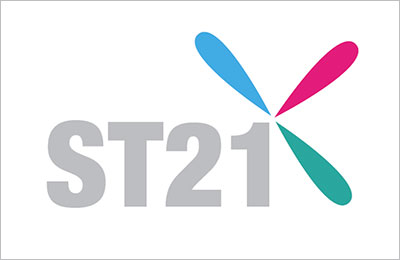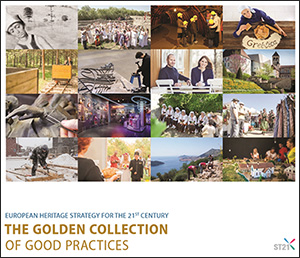Location of the initiative:

Relation to Strategy 21 Recommendations:
D5 - Encourage the reuse of heritage and use of traditional knowledge and practice
Time span of the initiative:
Start Date: 2008 / End Date: 2013
Motivation / Methodology
Our initiative refers to the following developmental challenges: developing Europe’s prosperity by drawing on its heritage resources; ensuring that Europeans enjoy a high quality of life, in harmony with their cultural and natural environment; implementing the principles of integrated conservation and ensuring that heritage is taken into account in sustainable spatial development strategies and programmes. It refers to promoting an inclusive approach to heritage (societal challenge) and raising awareness of the values conveyed by heritage (knowledge challenge). The initiative also refers to the following courses of action: to recognise and to promote integrated conservation as a priority in heritage policies and to encourage and reuse heritage for new purposes while respecting its values.
Our objective was cultural heritage centred, i.e. especially better protecting and conserving cultural heritage with a top-down approach. We were motivated by the aim to safeguard cultural heritage that was perceived as valuable, to preserve its core values and nature and consequently to revitalise our own environment. The initiative aims to achieve positive effects for society, i.e. sustainability, regional (rural) development and creating job opportunities as external motivations. This integration of all stakeholders raised awareness and enabled the dissemination of information to larger audiences.
(http://www.zvkds.si/sl/knjiznica/obnova-objektov-kulturne-dediscine).
Obstacles / Barriers
The main obstacle was insufficient funding: we estimate that the last call for applications had a ratio of 7:1 regarding the number we had helped prepare and applications approved. Despite the extremely positive focus of the RDP, this unfavourable ratio had a negative effect on investors/owners who spent much time and resources to get applications prepared and projects approved. It was also an indication that needs greatly exceed available public funds.
Restoration interventions pertained only to the exterior of residential buildings which were designated cultural monuments of local or national importance, while outbuildings were classified as ‘mere’ cultural heritage (the lowest protection category).
Ethnologist conservators in constant contact with rural cultural heritage attempted to improve each respective call for applications by providing comments and project selection criteria, but with limited success. We strove to make RDP financial incentives not merely sufficient to execute restoration interventions in heritage but more accessible and friendly to investors/owners. To this end, we suggested a reduction of the amount of co-funding by investors/owners, exemption of non-refundable funds from personal income tax, tax reliefs for purchases of material and execution of works, as well as an option for the owner’s own input in labour and material to be taken into account. We also proposed an extension of expert criteria for applications to calls, particularly regarding justified expenses for restoration of entire buildings including their interior, and for interventions in buildings classified as cultural heritage and not (only) as declared cultural monuments.
Change / Impact
All through the RDP execution, the IPCHS was aware that Measure 323 was a very important step in the conservation and upgrading of rural heritage. Based on favourable experiences of the execution of the measure to date, we ascertained that successful projects served as positive examples, encouraging heritage owners to respond in increasing numbers to calls for application, or to choose to conserve their heritage through appropriate use on their account.
IPCHS participation and consultancy with the Ministry of Agriculture, Forestry and Food contributed towards a clearer, unambiguous, and simple execution of calls for applications. The IPCHS also provided free monitoring of restoration interventions and after the work was finished prepared a statement of the suitability thereof.
Measure 323, with over a hundred executed projects on cultural heritage and cultural monuments, has contributed much to the integral conservation. In the century-long history of the public cultural heritage protection service in Slovenia (celebrated in 2013), the past RDP 2007-2013 stands as the most successful activity in conserving “minor” heritage and not just declared monuments to date.
Successful interinstitutional cooperation proved that the heritage as an important element of rural development continues to be a good practice example of the integral conservation policy and proof that heritage resources are a generator of sustainable development.
Lessons learned
The Ministry of Culture and IPCHS made efforts so that, due to strong interest of heritage owners and positive effects of the outgoing Measure, the new RDP RS 2014-2020 would continue to implement the policy of the conservation and upgrading of heritage aspects of rural development. After all, we wished for an even more active cooperation and consultancy with the Ministry of Agriculture, Forestry and Food, responsible for the rural development policy.
Unfortunately, the RDP RS 2014-2020 did not come up to these expectations: the Strategic standards and Execution aspects with thirteen Measures did not predict continuing support to the cultural heritage conservation (except the cultural landscape). They anticipated that funding of built heritage/monument restoration will only take part within the LEADER Programme.
We do hope that publication of our extremely successful initiative in the collection of good practices related to Strategy 21, will convince the Ministry of Agriculture, Forestry and Food to establish again such cultural activities in the next financial perspective, village renewal, and activities aimed at the restoration and upgrading of cultural and natural heritage of villages and rural areas as key contents of future measures: these concepts are important elements of any effort for integrated rural development.
Online resources
http://www.zvkds.si/sl/knjiznica/obnova-objektov-kulturne-dediscine
Contact information
Koželj, Zvezda
Institute for the Protection of Cultural Heritage of Slovenia (IPCHS)
[email protected]
http://www.zvkds.si/
Source of financing
Shared public/private financing
Financing details
15 million euros





